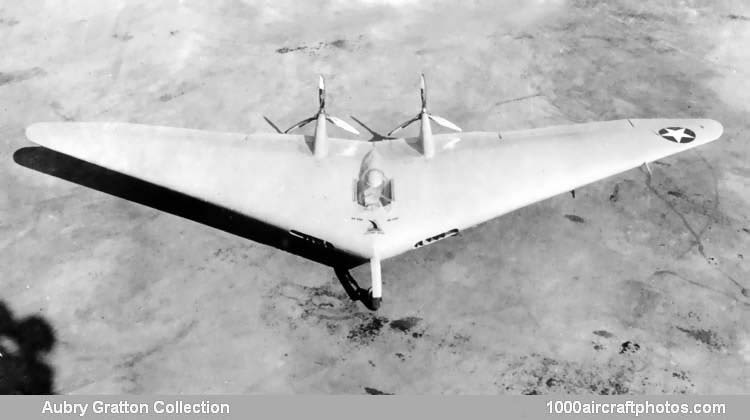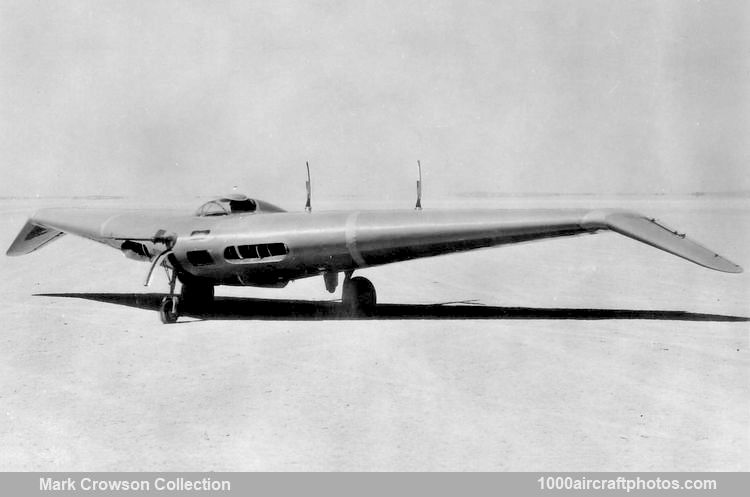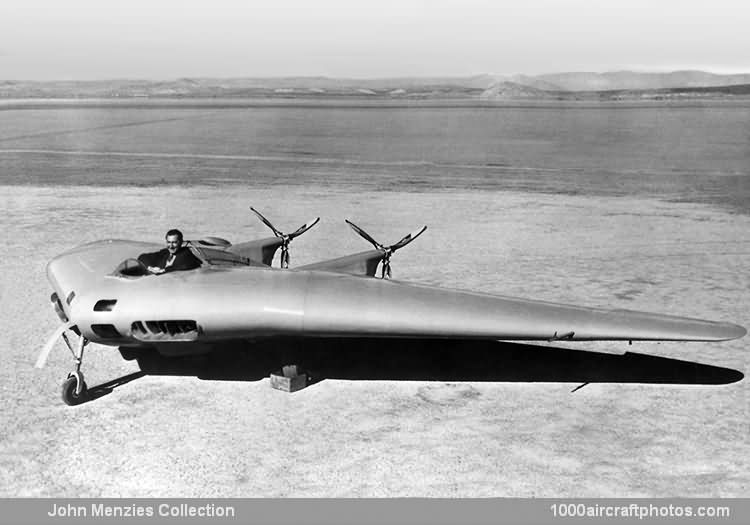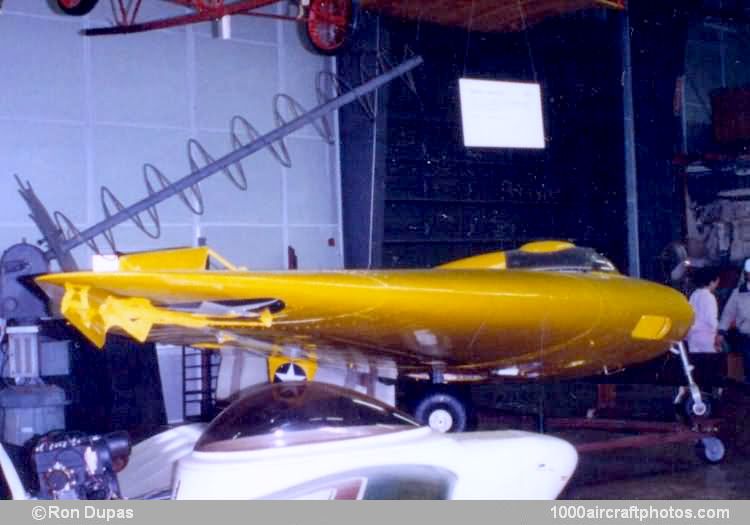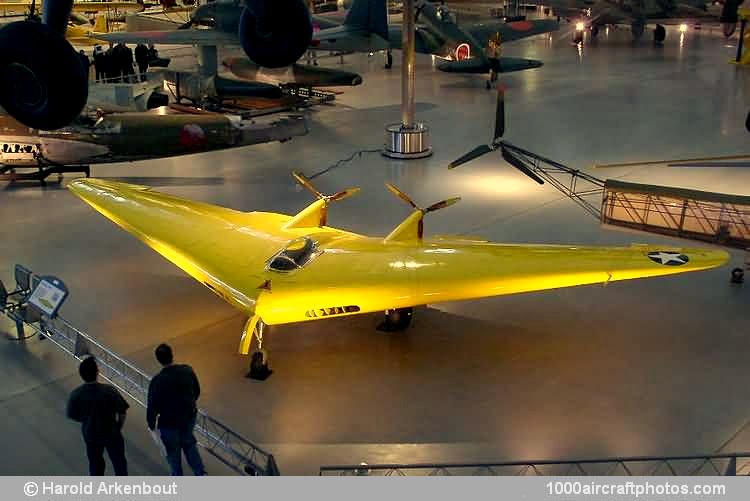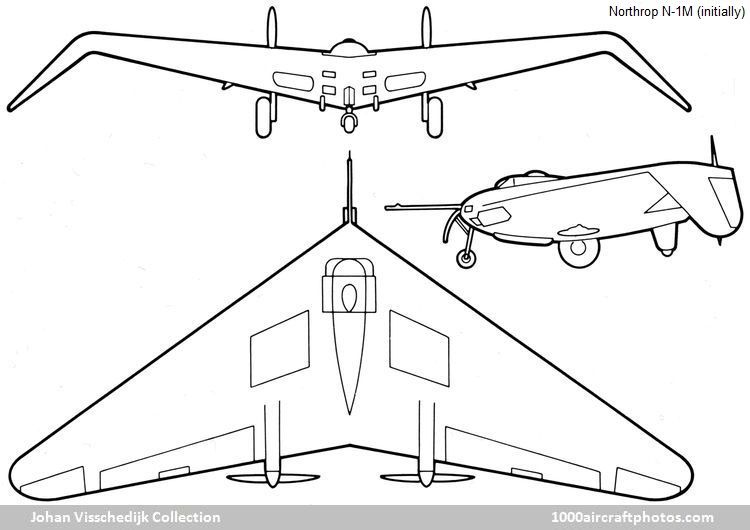005/31/2010. Remarks by Johan Visschedijk: "In July, 1939, Jack Northrop began engineering tests for a new 'Flying Wing' that would have no tail surfaces or fuselage and the power plant and crew would be accommodated within the contours of the airfoil so that there are no portions of the aircraft which do not contribute directly to lift, with the exception of the propeller shaft-drive housings which would extend for a short distance above the wing.
The first experimental model was designed as a one-half to one-third scale model known as the N-1M (reportedly the 'M' stood for Mockup or Model). It had provisions for a number of different type of wing-tips, control surfaces and surface control mechanisms, including wing tip rudders, and elevons (serving both as elevators and ailerons, it was the first successful application of the elevon). The center of gravity was variable, and it had a retractable tricycle landing gear.
Powered by two 65 hp Lycoming O-145 four-cylinder horizontally-opposed air-cooled engines which drove pusher screws through 10 ft (3.05 m) extension shafts, the first flight was made by Chief Test Pilot Vance Breese at Baker Dry Lake on July 3, 1940. Early test flights proved the aircraft to be underpowered and the engines were replaced by two 120 hp Franklin 6AC-264-F2 six-cylinder horizontally-opposed air-cooled engines.
